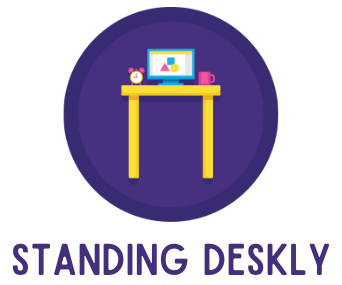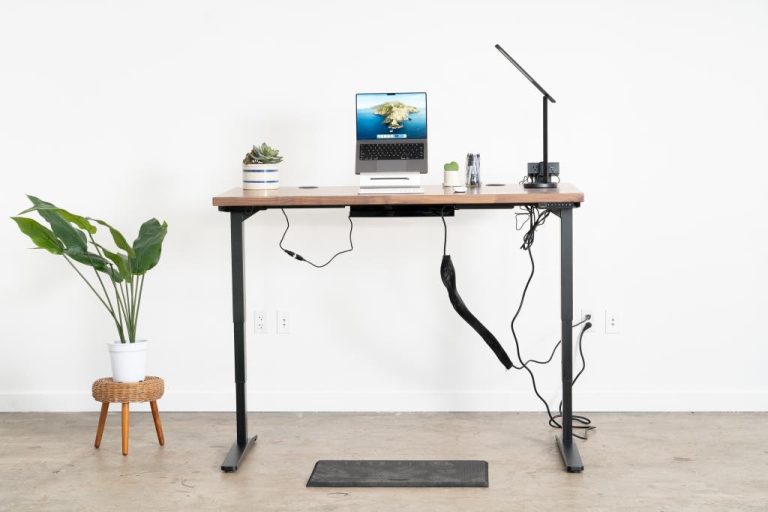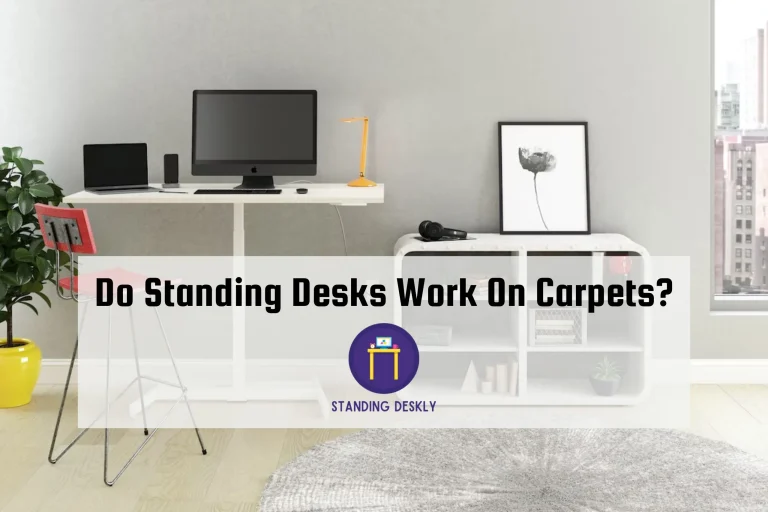Do Standing Desks Make A Difference?
The answer is yes. Standing desks have been shown to help improve posture, reduce back and shoulder pain, and increase productivity by up to 45%. Although standing may only burn a few more calories compared to sitting, it helps regulate blood sugar levels faster after a meal, and provides relief to the stiffness caused by sitting for prolonged periods. To maximize the benefits, experts recommend alternating between sitting and standing throughout the day, ensuring proper body alignment, and taking short walks every 30 minutes.
So, investing in a standing desk could be a smart move for your overall well-being.
What are standing desks?
Standing desks, as the name suggests, are desks designed for working while standing rather than sitting. They have gained popularity in recent years due to the potential health benefits they offer. Research indicates that there is a higher risk of diabetes, heart disease, and other lifestyle illnesses associated with prolonged sitting.
Standing desks encourage better posture and have been linked to reduced back pain. Some studies also suggest that using a standing desk could help in burning more calories, improving productivity, and increasing task accuracy. However, it is essential to balance the time spent standing and sitting to maximize the benefits of a standing desk.
Benefits of Standing Desks
There are numerous benefits to using standing desks, which can impact your overall health and wellbeing. For starters, standing desks promote better posture by encouraging you to maintain an upright position, reducing the strain on your neck and back. Research has shown that using standing desks can help alleviate aches and discomfort associated with prolonged sitting.
Additionally, these desks have been found to aid in blood sugar regulation and potentially reduce the risk of diabetes. Using a standing desk can boost your mental health by giving you more control over your workspace and encouraging you to move around. This leads to a more lively and engaging work atmosphere.
Improved Posture
Improved posture plays a significant role in maintaining your overall health and well-being. Using a standing desk correctly can help fix imbalances and reduce strain on your neck, shoulders, and back. It can also decrease your chances of developing spinal problems in the long run. Commit to practicing good standing desk posture, such as keeping your feet flat and shoulder-width apart and your arms at a 90-degree angle.
Remember to include regular sitting intervals with a height-adjustable chair that offers lumbar support. Ultimately, embracing proper posture with a standing desk can alleviate discomfort, prevent long-term damage, and promote increased productivity during your workday.
Reduced Risk of Obesity
Incorporating more standing and movement into your daily routine can significantly reduce your risk of obesity. Studies have proven that standing for 2.25 more hours per day can help people maintain a healthy weight, even if they eat more calories. (Source: Levine et al.)
This is because standing burns, on average, 50 more calories per hour compared to sitting. By using a standing desk, you’ll be one step closer to adopting a more active lifestyle and maintaining a healthier weight. So, why not make a simple, positive change in your work habits and see the difference it can make on your overall health?
Lowered Risk of Heart Disease
One significant benefit of using a standing desk is the lowered risk of heart disease. Prolonged sitting has been associated with an increased risk of developing heart disease by up to 147%. The detrimental effects of sitting all day are so harmful that even an hour of intense exercise may not compensate for them.
By incorporating more standing time into your daily routine, you can effectively reduce your risk of heart-related health issues. Numerous studies have shown that spending more time on your feet is advantageous for your heart health.
So, make the smart choice by using a standing desk – your heart will thank you for it.
Drawbacks of Standing Desks
While standing desks have gained popularity for their potential health benefits, it’s important to be aware of some drawbacks as well.
One significant concern is that standing for prolonged periods can lead to discomfort and soreness in the feet, legs, and lower back. This can be particularly problematic for individuals with pre-existing conditions such as arthritis or varicose veins.
Standing for too long can increase the risk of heart problems, as the heart needs to work harder to pump blood. Studies support this.
Lastly, a standing desk may impact productivity, as some tasks may be more ergonomic and efficient when sitting. Here are a few more drawbacks of standing desks:
Increased Fatigue
Increased fatigue is one of the drawbacks associated with using standing desks. Standing for extended periods can be quite tiring, especially if you are not wearing comfortable footwear or insoles. After a few hours, your feet may feel sore, and you may start shifting weight between both legs.
If you don’t balance standing with stretches and exercises, working at a standing desk can damage your muscles and make your leg feel like it’s burning by the end of the day. Therefore, it is essential to find the right balance between sitting and standing throughout the day to prevent increased fatigue.
Leg Discomfort
Leg discomfort is a common side effect when using standing desks without any proper adjustments or rest intervals. Prolonged standing can lead to foot pain and issues in the feet and legs due to strain on the plantar fascia and calf muscles. It can also cause the development of varicosities or issues within the veins in the lower legs.
To reduce leg discomfort, try sit-stand workstations, switch gradually to standing, wear comfy shoes, and take breaks to walk or sit every hour. In addition, using anti-fatigue work mats and performing stretching exercises can help alleviate the discomfort.
Proper Usage of Standing Desks
1. Understand the benefits: Research has shown that standing desks can help alleviate neck and back pain while improving mental well-being.
2. Listen to your body: Don’t aim to stand all day; find a balance between sitting and standing that suits your comfort levels.
3. Adjust your desk correctly: Ensure your desk height allows for your elbows to be at a 90-degree angle when typing.
4. Don’t forget to move: Combine standing with light physical activities, such as stretching or walking, to reap maximum benefits.
5. Invest in an anti-fatigue mat: This can help reduce foot and leg fatigue during prolonged standing.
6. Set a timer: Schedule regular breaks or transitions between sitting and standing to avoid long periods in a single position.
7. Pay attention to posture: Make sure you maintain proper spine alignment to avoid slouching or leaning.
8. Start gradually: Begin by incorporating standing into your routine for short intervals and gradually increase the duration as your body adapts.
Additional Exercise with Standing Desks
It’s no secret that standing desks can improve your health, particularly by reducing the risk of obesity, heart disease, and back pain. But did you know that using a standing desk can also provide additional exercise opportunities? While working at a standing desk, you can:
1. Perform calf raises.
2. March on the spot.
3. Do side leg lifts.
4. Stretch your hamstrings and quads.
5. Do squats.
6. Incorporate balance exercises.
7. Perform desk push-ups.
8. Engage your core muscles while standing.
9. Execute brief “deskercise” routines throughout the day.
Remember, every little bit of movement counts, so make the most of your standing desk by incorporating these light activities.
Conclusion: Standing desks can improve overall health.
In conclusion, standing desks may offer some health benefits, such as improving posture and reducing back and neck pain. While current research does not provide conclusive evidence, it does suggest that implementing a standing desk can contribute to a healthier lifestyle, especially when combined with other factors like regular exercise and a balanced diet.
However, it is essential to keep in mind that standing desks alone are not a panacea for all health issues, and individual preferences and needs should be considered when making a decision. To maximize the benefits, it may be helpful to incorporate the use of anti-fatigue mats or switch between sitting and standing throughout the day.

I’m the author and developer of Standingdeskly, the go-to site for standing desk enthusiasts. I provide comprehensive reviews of standing desks along with office setup tips. Combining years of research and personal experience, our goal is to make it easy for you to find the perfect standing desk tailored to your needs.







